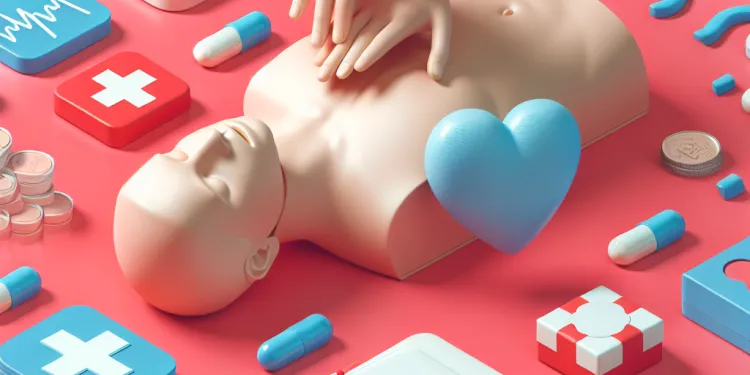
Find Help
More Items From Ergsy search
-
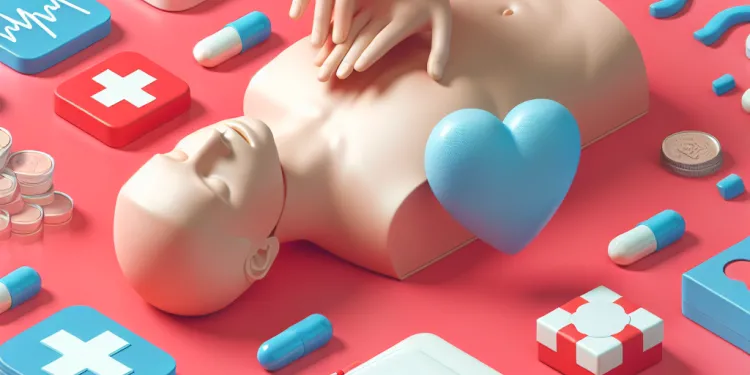
How important is it to learn CPR along with first aid?
Relevance: 100%
-
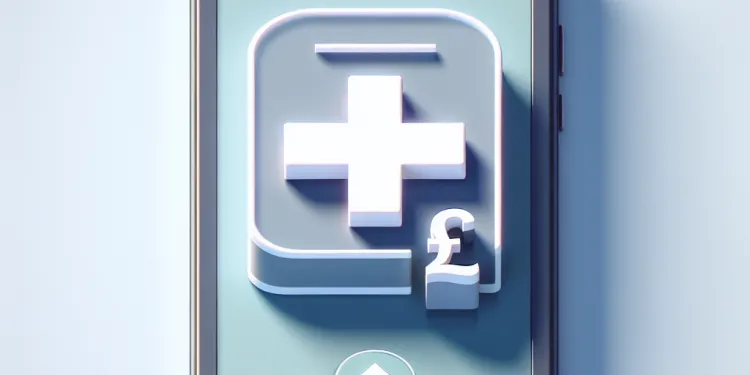
Are there mobile apps that teach first aid?
Relevance: 73%
-
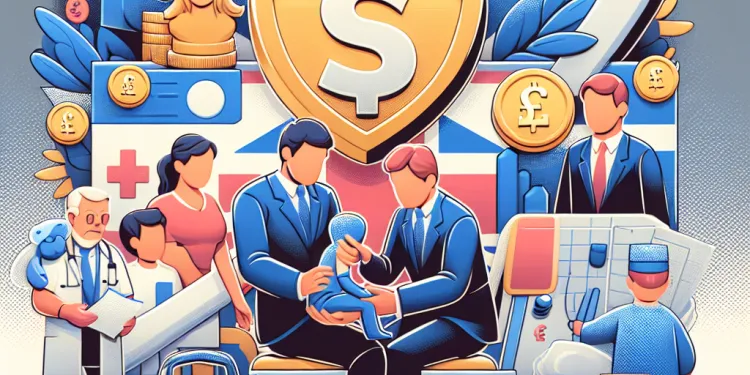
What age is appropriate to start learning first aid?
Relevance: 72%
-
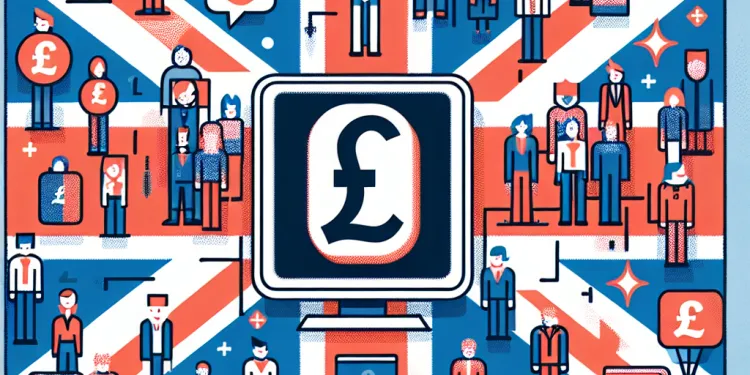
Can I learn first aid as a group?
Relevance: 71%
-
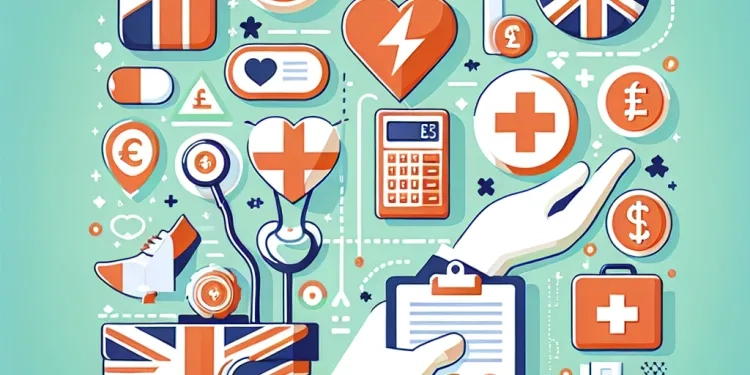
What is the best first aid certification to obtain?
Relevance: 71%
-
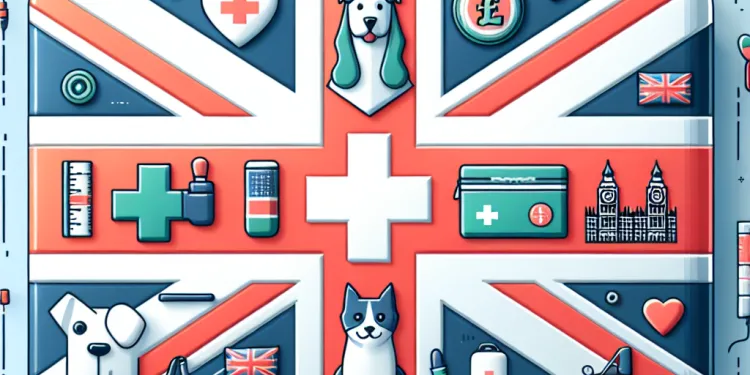
Are there first aid courses for pets?
Relevance: 69%
-
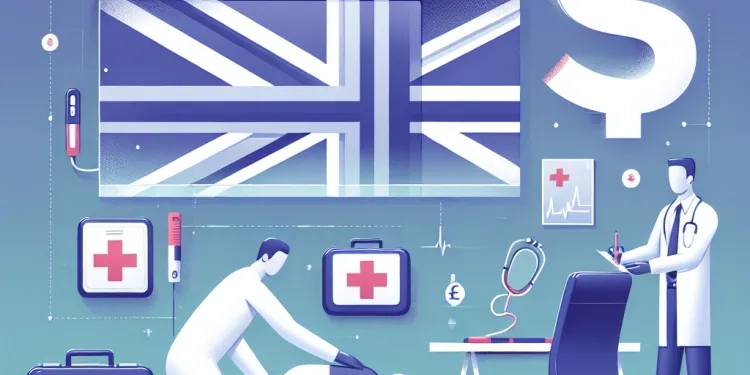
Can I take first aid courses in person?
Relevance: 69%
-

How can I practice first aid skills effectively?
Relevance: 69%
-
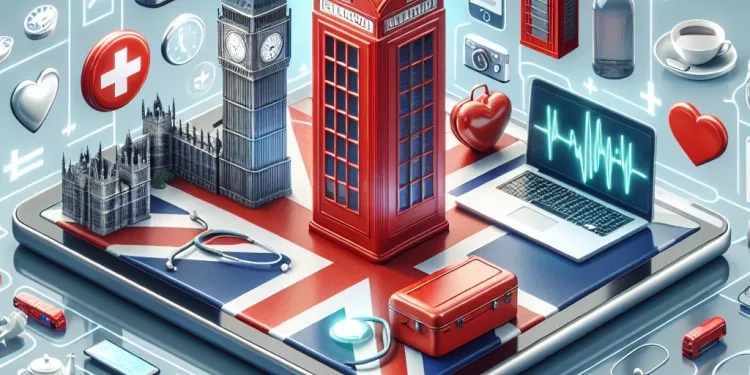
Where can I learn first aid online?
Relevance: 68%
-

What topics are covered in a first aid course?
Relevance: 67%
-
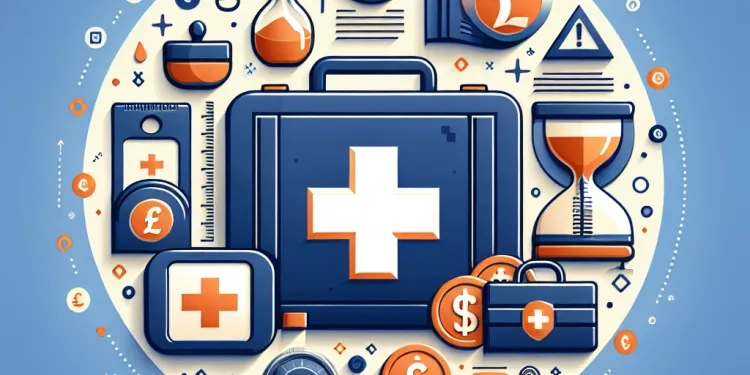
Do first aid certifications expire?
Relevance: 66%
-

Where can I learn First Aid?
Relevance: 66%
-
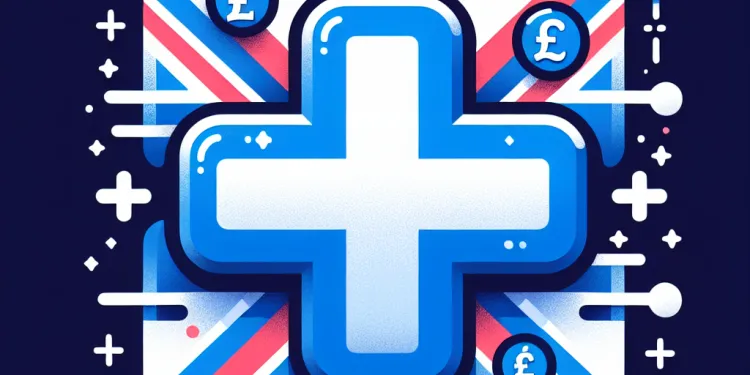
Are there free resources for learning first aid?
Relevance: 64%
-

Do I need to bring anything to a first aid course?
Relevance: 59%
-
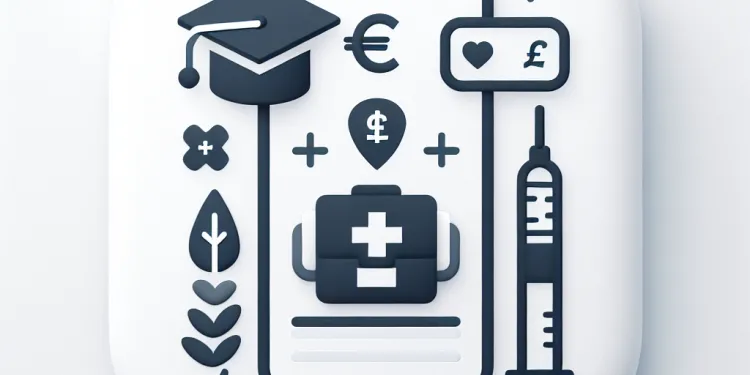
Can first aid courses be applied for college credit?
Relevance: 58%
-
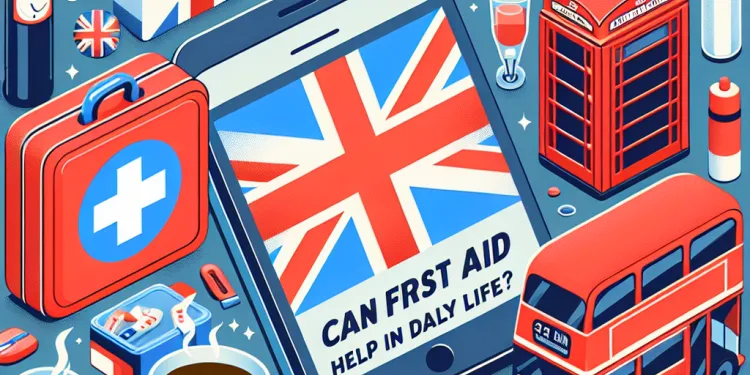
Can first aid skills help in daily life?
Relevance: 56%
-

What is the role of a defibrillator in CPR?
Relevance: 55%
-

Are there specific first aid courses for different professions?
Relevance: 48%
-
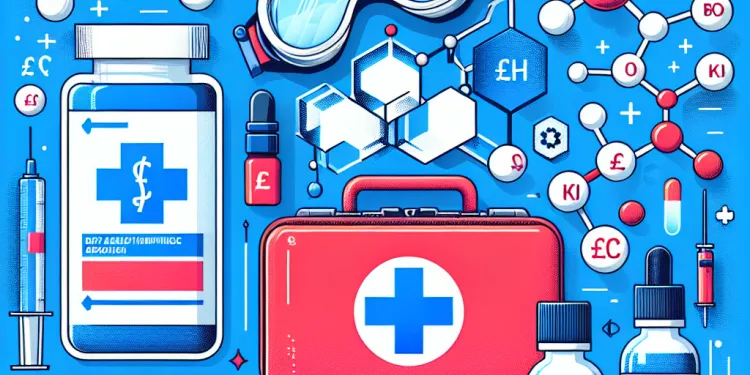
What first aid measures can be taken in case of methanol exposure?
Relevance: 39%
-

What language options are available for first aid courses?
Relevance: 39%
-
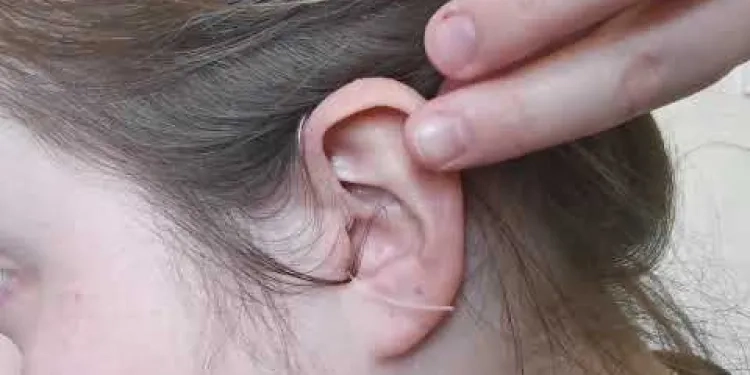
How to insert your hearing aid
Relevance: 36%
-

What is AIDS?
Relevance: 35%
-

Is it important to renew my first aid certification?
Relevance: 34%
-
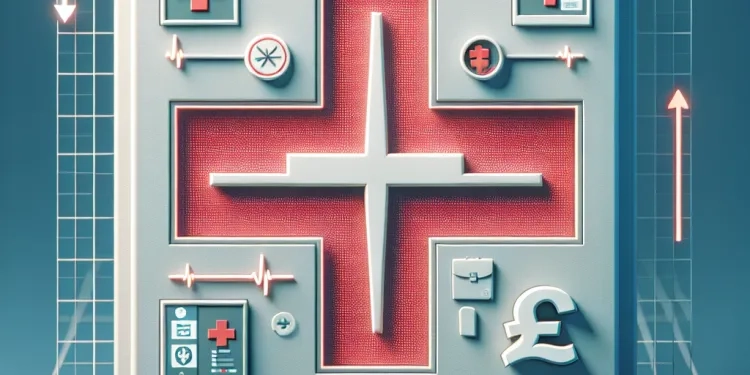
Are there online simulations for practicing first aid?
Relevance: 34%
-

What is HIV / AIDS?
Relevance: 31%
-
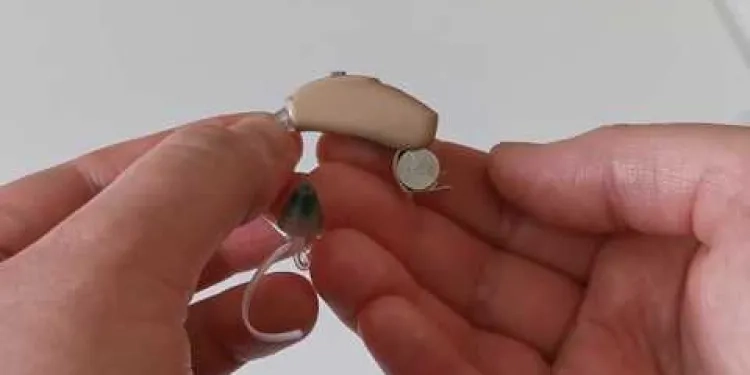
How to turn your hearing aids on and off
Relevance: 31%
-
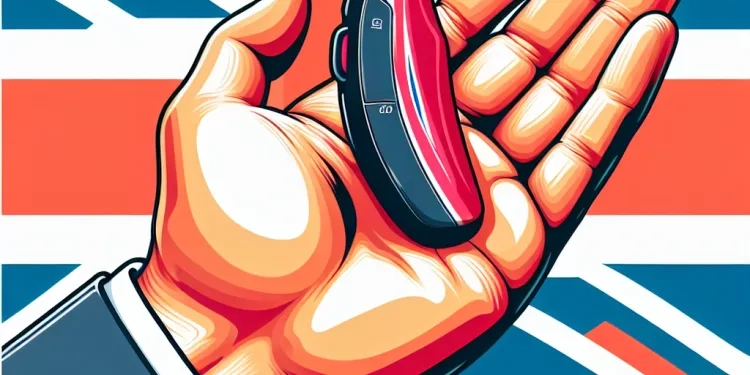
Showing you around your hearing aid
Relevance: 31%
-
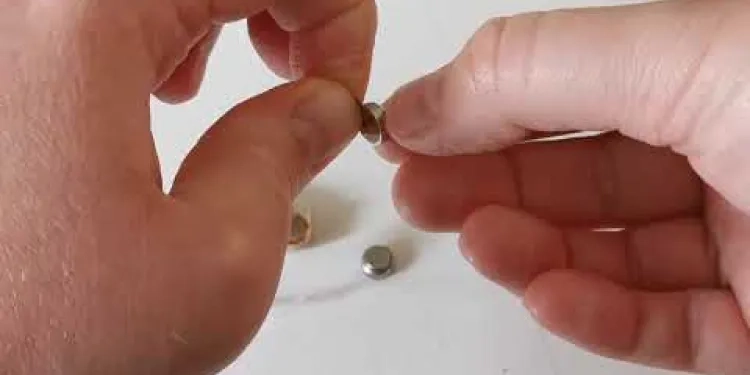
How to change your hearing aid battery
Relevance: 31%
-
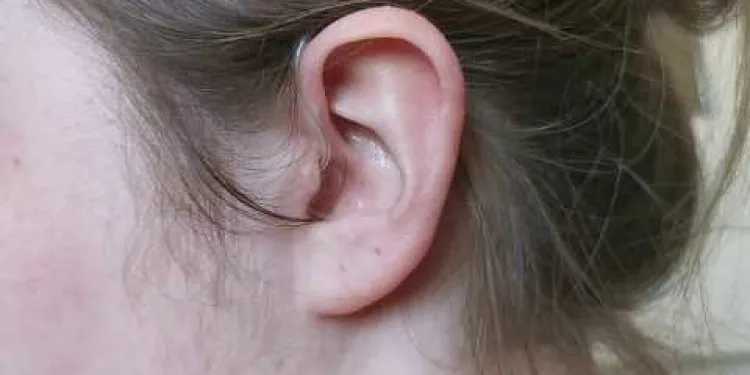
How to remove your hearing aid
Relevance: 30%
-

How to clean your hearing aid
Relevance: 30%
-

What is the difference between HIV and AIDS?
Relevance: 30%
-

Are there financial aids available for further education?
Relevance: 30%
-
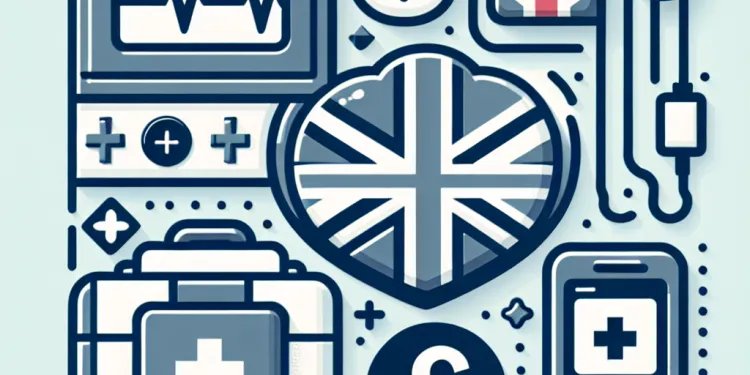
What should you do if a defibrillator is needed?
Relevance: 28%
-

How does the payment affect students' financial aid packages?
Relevance: 27%
-

Where was Nipah Virus first identified?
Relevance: 27%
-
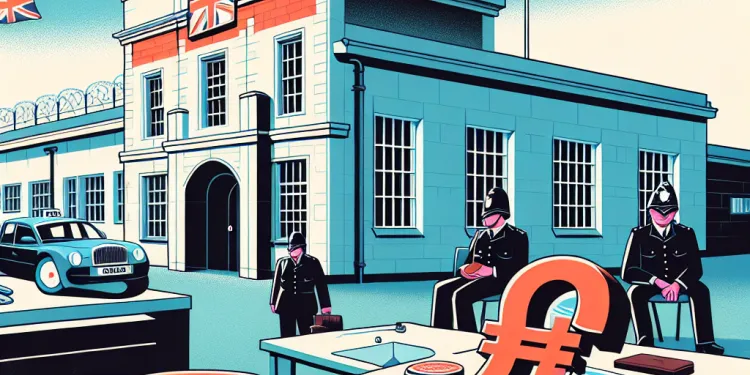
What to expect on the first day in a British prison.
Relevance: 26%
-

Can I have visitors on the first day?
Relevance: 26%
-

What is an AED?
Relevance: 25%
-

Can a defibrillator restart a stopped heart?
Relevance: 25%
-

Where was the Marburg virus first discovered?
Relevance: 25%
The Vital Importance of Learning CPR and First Aid
In the UK, emergencies can happen anywhere, from bustling city centres to serene countryside settings. Being equipped with the skills to handle such situations can make a significant difference. Learning Cardiopulmonary Resuscitation (CPR) alongside first aid is not only beneficial but can also be life-saving. Here’s why these skills are critical for everyone to acquire.
The Role of CPR in Medical Emergencies
CPR is a crucial lifesaving technique used in emergencies when someone’s breathing or heartbeat has stopped. This often happens in situations such as cardiac arrest or drowning incidents. In the UK, the British Heart Foundation reports that over 30,000 out-of-hospital cardiac arrests occur each year. Yet, survival rates remain low, partially due to the lack of CPR intervention from bystanders. Rapid initiation of CPR can double or triple a cardiac arrest victim’s odds of survival. Therefore, learning CPR equips individuals with the vital ability to sustain life until professional medical help arrives.
The Comprehensive Value of First Aid Training
While CPR specifically addresses cardiac emergencies, first aid encompasses a broader range of skills aimed at providing immediate care for various injuries and illnesses. From managing cuts and sprains to recognising the signs of a stroke or heart attack, first aid skills empower individuals to act effectively in different scenarios. This training is pertinent as it can help alleviate symptoms, reduce pain, and prevent conditions from worsening while waiting for emergency services to arrive.
Community Impact and Preparedness
The widespread ability to perform CPR and first aid fosters a sense of community preparedness. Individuals trained in these skills can offer vital support, bridging the gap until professional medical assistance can be accessed. This is particularly important in rural or remote areas of the UK where emergency response times may be longer. Moreover, the knowledge gained from CPR and first aid training can also boost confidence, enabling individuals to stay calm and act decisively in emergencies.
Access to CPR and First Aid Training
Accessing CPR and first aid training in the UK is straightforward, with numerous courses offered by reputable organisations such as St John Ambulance, the Red Cross, and local community centers. Many courses are flexible, offering in-person and online options to accommodate different schedules. Investing time in such training is invaluable, empowering people with the skills necessary to become immediate responders in critical situations.
Conclusion: A Critical Skill Set
In conclusion, learning CPR alongside first aid is of immense importance and should be considered a fundamental skill for all UK residents. With the potential to save lives, reduce suffering, and enhance community resilience, these skills can transform bystanders into lifesavers. It is not merely a personal advantage but a social responsibility, contributing to the safety and well-being of the broader community.
The Vital Importance of Learning CPR and First Aid
In the UK, emergencies can happen anywhere, like busy city spots or quiet countryside areas. Knowing how to help in these situations is really important. Learning CPR (Cardiopulmonary Resuscitation) and first aid can save lives. Here’s why everyone should learn these skills.
The Role of CPR in Medical Emergencies
CPR is a way to help save someone’s life when their heart or breathing stops. This can happen during things like a heart attack or drowning. In the UK, more than 30,000 people have heart attacks outside of hospitals each year. Not many survive because they don’t get CPR quickly. Doing CPR fast can make the chances of living much better. Learning CPR means you can keep someone alive until help arrives.
The Comprehensive Value of First Aid Training
CPR helps heart emergencies, but first aid covers many other problems. It teaches you how to help with cuts, sprains, and even heart attacks or strokes. First aid helps make people feel better and stops things from getting worse while waiting for help to come.
Community Impact and Preparedness
When more people know CPR and first aid, everyone is safer. People with these skills can help others until doctors or paramedics arrive. This is really important in places far from hospitals where it takes longer for help to reach. Learning these skills also makes you feel more confident and ready to act in an emergency.
Access to CPR and First Aid Training
It's easy to find CPR and first aid training in the UK. Groups like St John Ambulance and the Red Cross offer many courses. You can pick classes that fit your schedule, including online options. Spending time to learn these skills is very valuable and makes you ready to help in emergencies.
Conclusion: A Critical Skill Set
In summary, learning CPR and first aid is super important for everyone in the UK. These skills can save lives, reduce pain, and help make communities stronger. Learning them is not just good for you, but also helps keep everyone around you safe and well.
Frequently Asked Questions
What is CPR?
CPR stands for cardiopulmonary resuscitation, a lifesaving technique used in emergencies when someone's heartbeat or breathing has stopped.
Why is it important to learn CPR?
Learning CPR is crucial because it can significantly increase the chances of survival for someone experiencing a cardiac arrest.
Who can learn CPR?
Anyone, including laypersons, can learn CPR. Many organizations offer courses for people of all ages.
What are the basic steps of CPR?
The basic steps of CPR involve chest compressions and rescue breathing, often summarized as ‘CAB’: Compressions, Airway, Breathing.
Is learning first aid important too?
Yes, learning first aid is important as it provides the knowledge to respond to various minor and major medical emergencies.
How does CPR save lives?
CPR helps maintain circulation and breathing until emergency medical services can arrive and take over.
Can CPR be performed without formal training?
While formal training is best, performing hands-only CPR is better than doing nothing at all in case of an emergency.
How often should CPR training be refreshed?
It is recommended to refresh CPR training every two years to maintain proficiency and stay updated on guidelines.
What is the role of first aid in emergencies?
First aid provides initial care and stabilization in various emergencies, potentially reducing the severity of an injury or condition.
Where can I learn CPR and first aid?
Many places offer CPR and first aid training, including local Red Cross chapters, community centers, hospitals, and online platforms.
Do you need special equipment to perform CPR?
No special equipment is needed to perform CPR, but having access to an AED (automated external defibrillator) can increase the chances of survival.
Why is it important for workplaces to have CPR and first aid training?
Having employees trained in CPR and first aid can improve workplace safety and reduce the consequences of medical emergencies.
Can CPR cause injury to the person receiving it?
While there is a risk of rib fractures or other injuries, providing CPR is crucial and can be life-saving.
How does first aid help in non-cardiac emergencies?
First aid helps manage injuries and illnesses, such as cuts, burns, allergic reactions, and minor bone fractures, providing care until further help arrives.
Are there different types of CPR for adults, children, and infants?
Yes, the CPR techniques vary slightly for adults, children, and infants, mainly in the force and method of compressions and rescue breaths.
How long does a CPR and first aid course typically take?
Courses usually range from a few hours to a full day, depending on the depth and combination of CPR and first aid training offered.
What are the benefits of having CPR skills?
Having CPR skills empowers you to act confidently in emergencies, potentially saving lives and providing comfort to those in distress.
Can learning CPR and first aid reduce the spread of infections?
Yes, part of the training includes hygiene and safety practices to protect both the rescuer and victim from infections.
Is CPR training accessible worldwide?
CPR training is widely accessible in many countries through various organizations and can be found in online formats as well.
Is it legally required to perform CPR in an emergency?
Laws vary by location. Many places have Good Samaritan laws that protect those who assist in emergencies to encourage help without fear of legal repercussions.
What is CPR?
CPR stands for Cardiopulmonary Resuscitation. It is a way to help someone who has stopped breathing or whose heart has stopped. You use your hands to press down on the chest and give breaths. This helps blood and air move in their body.
Here are some tips to help you understand better:
- Think of CPR as pushing and breathing to help someone.
- You can watch videos to see how CPR is done.
- Practice with a teacher or in a class.
CPR means helping someone when their heart or breathing stops. It can save their life in an emergency.
Why is it important to learn CPR?
CPR helps someone who is not breathing or their heart has stopped. CPR can help save their life. It is good to learn CPR, so you can help people in an emergency.
Sometimes, a person will need help fast. If you know CPR, you can help until doctors arrive.
Ask someone to show you how to do CPR. You can also watch videos to learn. Practice with a teacher if you can.
It feels good to know you can help someone if they need it.
It is important to learn CPR. Doing CPR can help save someone’s life if their heart stops working.
Who Can Learn CPR?
CPR is not hard to learn. It is a way to help someone who is not breathing. Anyone can learn CPR. Kids, teens, and adults can all learn. It's good to learn CPR in case of emergencies.
If you want to learn CPR, you can take a class. Some places teach CPR for free. You can also watch videos online to see how to do it. A dummy or doll can help you practice.
Ask someone who knows CPR to help you learn. Remember, learning CPR can help you save a life!
Everyone can learn CPR, even if you are not a doctor. Many groups have classes for people of any age.
What do you do to help someone with CPR?
Here are the easy steps to help someone:
- Make sure it is safe to help.
- Tap the person and shout, "Are you okay?"
- If no response, call 911 for help or ask someone else to call.
- Start pressing hard and fast on the center of their chest.
- Keep doing this until help gets there.
You can use videos and apps to learn more.
CPR is a way to help someone who is not breathing. You can remember it with the letters 'CAB':
C is for Compressions: Push down on the person’s chest.
A is for Airway: Make sure their mouth and throat are clear.
B is for Breathing: Give them air by breathing into their mouth.
Is it important to learn first aid?
Learning first aid can help you take care of someone who is hurt.
It is good to know what to do in an emergency.
Here are some things that can help you learn:
- Watch videos about first aid.
- Take a first aid class.
- Use picture guides or books.
- Ask someone to explain it to you.
Yes, learning first aid is important. It helps you to know what to do if someone gets hurt or sick.
How does CPR help people stay alive?
CPR can help when someone’s heart stops beating. It uses chest pushes to keep blood moving. Blood carries oxygen to the brain and heart.
If someone's heart stops, CPR can keep them alive until an ambulance comes.
If you want to learn CPR, you can take a class. Practice helps you know what to do.
There are videos and online guides to help learn CPR as well.
CPR helps keep blood moving and helps with breathing until doctors or paramedics can come and help.
Can you do CPR if you haven't had special training?
Yes, you can help someone by doing CPR even if you haven't had special training. CPR means pushing on someone's chest to help the heart pump blood.
Here are some helpful tips:
- Stay calm. Call for help by dialing emergency services right away.
- Kneel next to the person who needs help.
- Put your hands in the middle of their chest.
- Push down hard and fast, like a steady drum beat.
- Keep doing this until help arrives.
Remember, you are doing a good thing by trying to help!
If someone is in trouble, you should do hands-only CPR. It is better than not helping at all. It is always best to learn how to do CPR properly, but this will still help in an emergency.
How often should you update your CPR training?
It is important to keep learning and practicing CPR skills. Experts say you should update your CPR training every year. This way, you remember what to do in an emergency.
Here are some tips to help you:
- Take a CPR class every 12 months.
- Use videos and online tools to practice.
- Ask someone to help you practice CPR skills.
By doing these things, you can be ready to help someone in need.
It is good to practice CPR every two years. This helps you to remember how to do it right and learn any new changes.
What does first aid do in emergencies?
First aid helps people who are hurt or sick. It is the first help given before a doctor comes. First aid can save lives. It stops injuries from getting worse. It helps people feel better.
Sometimes, using a first aid kit can help. A first aid kit has things like bandages and tape. Learning a few first aid steps can also be very helpful.
There are videos online that show how to do first aid. Apps on phones can also help you learn the steps.
First aid is the help you give when someone is hurt or sick. It can make things better and stop the problem from getting worse.
Where can I learn CPR and first aid?
You can learn CPR and first aid from different places. Here are some ideas:
- Look for classes at local community centers.
- Check with your school or workplace.
- Find online courses from trusted websites.
Ask someone to help you or use tools like speech-to-text to make learning easier.
You can learn CPR and first aid in many places. You can go to your local Red Cross, a community center, or a hospital. You can also learn online.
Do you need special tools to do CPR?
CPR is when you help someone breathe if they stop. You don't need any special tools to do CPR. You can use your hands.
Here are some tips:
- Push hard and fast in the middle of the person's chest.
- Keep doing this until help arrives.
You can also take a CPR class to practice. You can use a doll to practice, and watch videos too. This will help you feel more ready to help someone.
You don't need any special tools to do CPR. But having an AED (a machine that helps restart the heart) can help save a life.
Why do workplaces need CPR and first aid training?
Workplaces need CPR and first aid training to help people when they are hurt or sick. This training teaches you how to give simple help until doctors or nurses arrive. It can save lives and keep people safe.
Here are some tools and techniques that can help:
- Pictures and videos to show how to help someone.
- Practice with other people to get better at helping.
- Simple step-by-step guides to follow during an emergency.
If workers know how to do CPR and first aid, everyone will be safer at work. It can help a lot if someone gets hurt or sick.
Could CPR hurt the person who gets it?
When someone gets CPR, it can sometimes cause injuries. People might have broken ribs or feel sore. But CPR can help save their life. It's important to call for help and follow the steps carefully.
If you want to learn more about how to do CPR, you can watch a video or take a class. You can also ask an adult to practice with you using a doll or a pillow.
Doing CPR can sometimes break ribs or cause other injuries. But doing CPR is super important because it can save someone's life.
How can first aid help in emergencies that are not about the heart?
First aid is helping someone who is hurt or sick. It can help with cuts, burns, allergies, or small broken bones. It takes care of them until the doctor or ambulance comes.
Are there different types of CPR for adults, children, and babies?
Yes, CPR is different for adults, children, and babies. For adults, use both hands to push on the chest. For children, use one hand. For babies, use two fingers.
Here are some helpful tips:
- Stay calm and call for help if you need it.
- There are videos and classes that can help you learn CPR.
- A CPR doll can help you practice.
CPR is a way to help someone who is not breathing. The way you do CPR is a little different for adults, children, and babies. This is because you use different strength and ways to press on their chest or give breaths.
How long does it take to do a CPR and first aid course?
A CPR and first aid course usually takes a few hours. It can be done in one day.
Here are some tips to help you:
- Ask questions if you don't understand.
- Take breaks if you need to.
- Use pictures or videos to help you learn.
Courses can last just a few hours or a whole day. It depends on how much CPR and first aid you want to learn.
Why is it good to know CPR?
Knowing CPR can help save a life in an emergency. If someone's heart stops or they can't breathe, you can help them by doing CPR. This can give them a better chance to get better.
Learning CPR is easy. You can take a class or watch videos online. Practice with a dummy or a pillow to get better at it.
Remembering the steps can be hard. You can use a small card or app to help you. This way, you can feel ready to help if someone needs you.
Knowing how to do CPR helps you feel strong and ready in emergencies. You can help save lives and make people feel better when they are scared.
Can learning to help in emergencies stop germs from spreading?
Yes, training teaches how to stay clean and safe. This keeps both the helper and the person they are helping from getting sick.
Can everyone learn CPR everywhere in the world?
CPR is how we help someone if their heart stops. It is important for saving lives.
In some places, people can learn CPR in schools or from special classes, but not everywhere.
Some people may have problems learning CPR because of money, distance, or lack of teachers.
To help, we can use videos, apps, or online lessons. These tools can make learning easier and more available for everyone.
If more people can learn CPR, more lives can be saved.
You can learn CPR in lots of places. Many countries have groups that teach CPR. You can also learn CPR online.
Do you have to do CPR by law if there is an emergency?
Laws are different in each place. Many places have special rules called Good Samaritan laws. These laws help protect people who help in emergencies. They make sure that people don't have to worry about getting in trouble for helping.
Useful Links
- Ergsy carfully checks the information in the videos we provide here.
- Videos shown by Youtube after a video has completed, have NOT been reviewed by ERGSY.
- To view, click the arrow in centre of video.
- Most of the videos you find here will have subtitles and/or closed captions available.
- You may need to turn these on, and choose your preferred language.
- Go to the video you'd like to watch.
- If closed captions (CC) are available, settings will be visible on the bottom right of the video player.
- To turn on Captions, click settings .
- To turn off Captions, click settings again.
More Items From Ergsy search
-

How important is it to learn CPR along with first aid?
Relevance: 100%
-

Are there mobile apps that teach first aid?
Relevance: 73%
-

What age is appropriate to start learning first aid?
Relevance: 72%
-

Can I learn first aid as a group?
Relevance: 71%
-

What is the best first aid certification to obtain?
Relevance: 71%
-

Are there first aid courses for pets?
Relevance: 69%
-

Can I take first aid courses in person?
Relevance: 69%
-

How can I practice first aid skills effectively?
Relevance: 69%
-

Where can I learn first aid online?
Relevance: 68%
-

What topics are covered in a first aid course?
Relevance: 67%
-

Do first aid certifications expire?
Relevance: 66%
-

Where can I learn First Aid?
Relevance: 66%
-

Are there free resources for learning first aid?
Relevance: 64%
-

Do I need to bring anything to a first aid course?
Relevance: 59%
-

Can first aid courses be applied for college credit?
Relevance: 58%
-

Can first aid skills help in daily life?
Relevance: 56%
-

What is the role of a defibrillator in CPR?
Relevance: 55%
-

Are there specific first aid courses for different professions?
Relevance: 48%
-

What first aid measures can be taken in case of methanol exposure?
Relevance: 39%
-

What language options are available for first aid courses?
Relevance: 39%
-

How to insert your hearing aid
Relevance: 36%
-

What is AIDS?
Relevance: 35%
-

Is it important to renew my first aid certification?
Relevance: 34%
-

Are there online simulations for practicing first aid?
Relevance: 34%
-

What is HIV / AIDS?
Relevance: 31%
-

How to turn your hearing aids on and off
Relevance: 31%
-

Showing you around your hearing aid
Relevance: 31%
-

How to change your hearing aid battery
Relevance: 31%
-

How to remove your hearing aid
Relevance: 30%
-

How to clean your hearing aid
Relevance: 30%
-

What is the difference between HIV and AIDS?
Relevance: 30%
-

Are there financial aids available for further education?
Relevance: 30%
-

What should you do if a defibrillator is needed?
Relevance: 28%
-

How does the payment affect students' financial aid packages?
Relevance: 27%
-

Where was Nipah Virus first identified?
Relevance: 27%
-

What to expect on the first day in a British prison.
Relevance: 26%
-

Can I have visitors on the first day?
Relevance: 26%
-

What is an AED?
Relevance: 25%
-

Can a defibrillator restart a stopped heart?
Relevance: 25%
-

Where was the Marburg virus first discovered?
Relevance: 25%